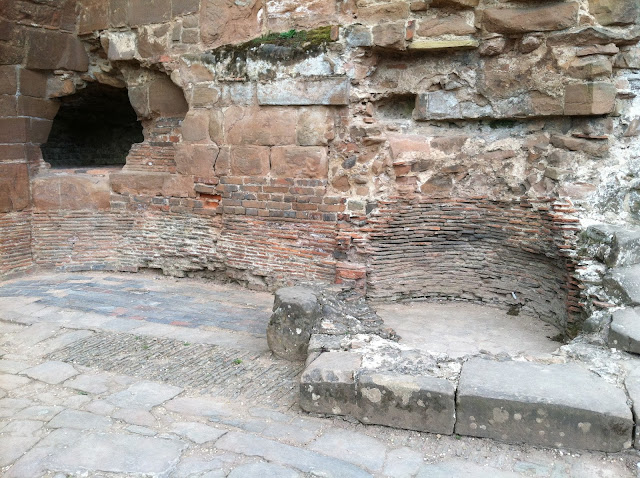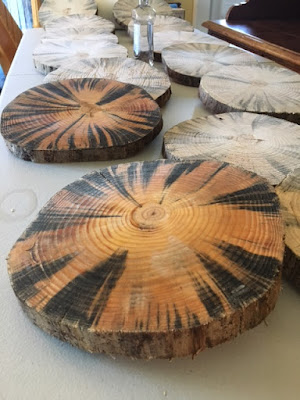All my life I have been fascinated with castles. If I drew something when I was little, half the time it would be a castle. I finally got to see my first one in person a few years ago in England. It was Kenilworth Castle in Kenilworth, England, 90 miles northwest of London. It was massive. The stone walls were so perfectly aligned even to this day. I marveled at the workmanship and can't imagine how they did it so long ago! My favorites were castle ruins, because I could get close to the stone walls and climb about the uneven stone spiral staircases.
The old kitchens really interested me. They were fascinating. At Kenilworth Castle, Kenilworth, England, I could see where a giant cauldron was seated and the stone step someone stood upon to stir the pot! I found the bread oven inside the enormously thick castle wall! When I ran for cover from a passing hail storm, I found a tower with a room which had a vaulted stone ceiling where they stored their food. I climbed the stairs to where they carried the food up to the great hall.
The main kitchen in Kenilworth Castle, was added in the 1370's by John of Gaunt. The kitchen was in use until the 17 century!
 |
Kenilworth Castle, Kenilworth, England. Bread Oven on the left and place for the copper (cauldron) on the right. Stone steps on the side gave someone access to stand and stir the pot. They would boil large chunks of meat and add chopped vegetables at the last minute for the main meal served in the Great Hall. |
 |
| Kenilworth Castle, Kenilworth, England. The Great Hall. |
 |
| Kenilworth Castle, Kenilworth, England. You can still see a lot of detail in the stonework despite the castle being slighted. |
Here are the steps where servants carried food leading from the main kitchen to the Great Hall.
 |
| Kenilworth Castle, Kenilworth, England. Stairs leading from the main kitchen to The Great Hall. |
 |
| Kenilworth Castle, Kenilworth, England. Stone vaulted ceiling in a tower where food was stored. |
It was quite an operation to keep people fed in these castles on a daily basis. It is incredible how much information on how this was done can still be seen in the ruins.
Knaresborough Castle in Knaresborough, NorthYorkshire England had a dungeon. I learned, however, that it was originally built as a storage area for food. When the castle was being slighted (demolished) after the civil war, the townspeople asked for the tower to be spared to be used as a prison. The dungeon then became a place of misery.
 |
| The King's Tower, Knaresborough Castle, in North Yorkshire England. |
 |
| The throne room, Knareborough Castle. You can still see the arch over the area where the throne sat. |
How did the castle survive long sieges? How did they get their food and supplies? Secret tunnels of course, where the food and supplies could be brought in undetected by the enemy! They are called Sally Ports. At Knaresborough Castle, I was able to go into my first Sally Port - going under a castle wall for the first time! They also used the tunnels to let the soldiers out in the dead of night for surprise attacks on the surrounding enemy. The entrance to these tunnels was kept hidden in one of the structures within the castle walls. The location was kept secret on pain of death. The exit of the tunnel was also secret and well hidden.
 |
Knaresborough Castle, Knaresborough, North Yorkshire England. Looking down the Sally Port, a secret escape tunnel under the castle wall.
|










Comments
Post a Comment